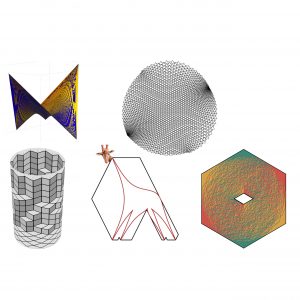 In the last 20-30 years probability theory and statistical mechanics have been revitalized with the introduction of tools from geometry, notably conformal geometry and discrete analyticity, but also algebraic geometry and integrable systems.
In the last 20-30 years probability theory and statistical mechanics have been revitalized with the introduction of tools from geometry, notably conformal geometry and discrete analyticity, but also algebraic geometry and integrable systems.
Recent connections between classical and discrete geometric structures on surfaces, and combinatorial models such as the dimer model, Ising model and the Tutte polynomial reveal a significant connection with geometry, notably hyperbolic geometry and polyhedra. Other recent work on the dimer model has led to connections with knot theory, Lorentzian geometry, and symplectic geometry. From another direction, the combinatorics of the totally nonnegative Grassmannian has connections with the dimer model. Likewise, the isotropic Grassmannian and orthogonal Grassmannian have connections with spanning trees and the Ising model.
Finally, there are well-known connections between some statistical mechanics models and representation theory, such as Young diagrams, Gelfand-Tsetlin patterns, Knutson-Tao puzzles and Littlewood-Richardson coefficients and their generalizations. The Bethe Ansatz and the Yang-Baxter equation were developed for the 6-vertex model but are now fundamental tools in combinatorial representation theory.
This program will bring together researchers in this somewhat disparate realm of ideas, united by the underlying themes of geometry and statistical mechanics.
Dmitry Chelkak
(University of Michigan)
Jan de Gier
(University of Melbourne)
Vadim Gorin
(University of California, Berkeley (UC Berkeley))
Richard Kenyon
(Yale University)
Greta Panova
(University of Southern California (USC))
Sanjay Ramassamy
(Centre National de la Recherche Scientifique (CNRS))
Marianna Russkikh
(University of Notre Dame)